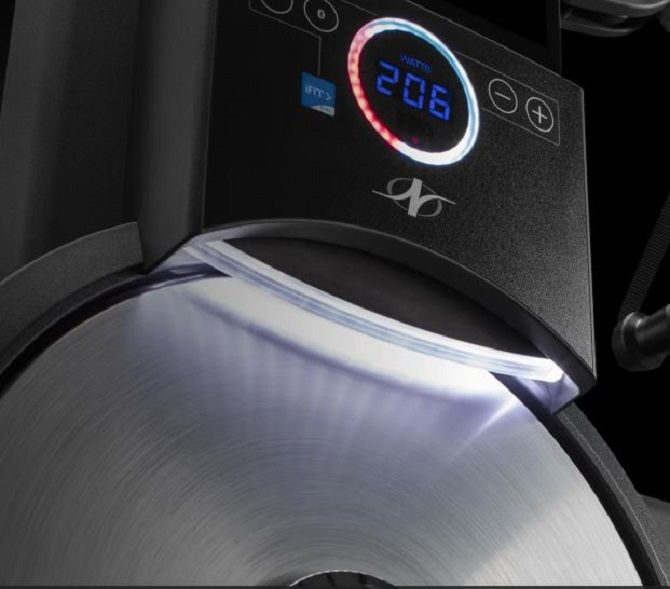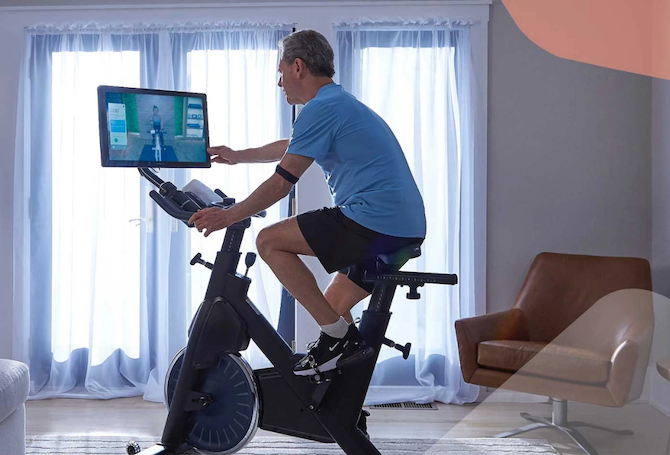Have you seen commercials for exercise machines that use "digital weight" and wondered what on earth that was? Or have you looked at these sleek and tidy new machines and wondered where all of the resistance came from?
Read on to find out how digital weights work and whether they're right for you.
How Does Digital Weight Work?
Different companies call this solution by different names. Tonal may have come up with the catchiest and most futuristic-sounding name with "digital weight," but Nordic Track's "Magnetic Resistance" tells us decidedly more about what this technology is and how it works.
You work out your muscles by overcoming force. With conventional weight machines, that force is gravity pulling down heavy plates that you try to lift. With machines like Bowflex, this force comes from the tensile strength of the firm but flexible rods.
Yet, with this new class of machines, it is electromagnetism.
If you think back to grade school science classes trying to push two magnets together, you know that even very small magnets can generate a surprising amount of resistance. Now, think back to a high school physics class, learning about electromagnets.
Electromagnets create temporary magnets of variable strength by passing an electrical current through a wire wrapped around another metal. This current generates a magnetic field that can be increased, decreased, or terminated by controlling the wire's electrical current.
Opposing electromagnetic fields then provide the resistance that your muscles are overcoming when you work out with these machines. The amount of resistance, the "digital weight" that you are overcoming, is controlled by computer chips in the machine. Adjusting resistance is quick and easy or even automated and intelligent.
How Digital Weight Is Different

All of this about digital weight and electromagnetic resistance is swell and all, but how is it different in terms of your workout, your workout space, and your home gym budget?
We've already touched on one or two of the key differences between these new machines and a more familiar workout kit. The first is that machines that rely on magnetic resistance weigh less because they don't rely on actual weights. That makes it easier to ship and assemble.
They're also nicer to the floors in your home. That is, when they sit on the floor. Tonal is wall-mounted.
Advantage: Space
That brings us around to the second key advantage. Digital weight machines take up significantly less space. Wall-mounted Tonal claims to offer 200 pounds of "digital weight." Think about the volume occupied by 200 pounds of conventional weights, even without the machine.
Even machines that use tensile resistance, like Bowflex, take up space because the rods you are bending take up space even when you aren't using them. In many cases, the rods also need their own clearance zone, so the space that you need to use the machine is significantly larger than the space that the machine occupies on its own.
Disadvantage: Cost
Electromagnets aren't particularly expensive. The onboard computers that control them and, in some cases, monitor your own effort to make the resistance intelligently adapt to your ability, is very expensive.
While the now comparatively humble Bowflex might cost some $1,500, a comparable Nordic Track machine can cost $2,000, and a Tonal machine more than twice that. And this is to say nothing of the subscription cost of fitness classes or the energy expenditure that comes along with all of that digital weight technology and high-end displays.
While you can find some free remote exercise classes, they aren't likely to be compatible with a machine with its own branded and paid subscription content. Tonal membership is $50 per month, while Nordic Track's iFit is $39 per month.
Give and Take: Performance
Talking about actual workout performance for these machines is a bit of a mixed bag. On the one hand, the idea of intelligently changing resistance is pretty neat. Unfortunately, only Tonal has this capability right now.
The alternative is still pretty cool. Nordic Track's machines have technology that lets trainers during live fitness classes change the resistance settings of the machines of their remote students. But, again, that means locking yourself in to select fitness classes.
Similarly, conventional exercise machines had different "settings" for the weight you were going to overcome. Whether that was the adding rods method in Bowflex or the older pin-and-plate model, it would be nice to be able to lift between settings. Again, the more expensive models can do this, but other magnetic resistance machines still have settings.
Finally, the magnetic resistance systems can only provide so much digital weight. Nordic Track doesn't make their upper limit readily available, but Tonal says that its system maxes out at 200 pounds. If you want to go over that, you've got to go back to the gym.
What Companies Use Digital Weight?

When it comes to digital weight and muscle building machines, the only real names in the space right now are the two that we've named: Tonal and Nordic Track. While Bowflex and other big-name manufacturers of more familiar equipment have gotten onboard with things like mounting screens to their equipment, they aren't yet offering digital weight.
Speaking of magnetic resistance more generally, this technology has been around for a longer time in workout bikes. It is probably safe to say that most workout bikes on the market are already using magnetic resistance.
In fact, most of the things that digital weight machines are bragging about, like adaptive resistance and smooth transitions between resistance settings, are both things that workout bikes have been achieving with this technology for a while now.
It's Still Okay to Run and Flip Tires
If you're the eggs-and-steak, tire-flipping, no-nonsense kind of athlete, that's fine. The robots aren't coming to take your dumbbells any time soon. However, those dumbbells look incredibly basic next to a wall-mounted television that uses computers to read your muscles and actively make your workout more challenging using nothing but magnets.
There are several considerations before delving into the world of digital weights, the biggest of which is cost.